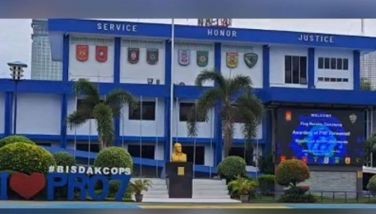Five cyclones to enter PAR
CEBU, Philippines - At least five tropical cyclones are still expected to cross the Philippines in the coming months.
Engr. Oscar Tabada, head of PAGASA's Regional Services Division for Visayas, said that one to three tropical cyclones are expected to cross the path of the Philippines in November and another one to two the following month.
He said an average of 20 tropical cyclones enter and cross the Philippine Area of Responsibility every year. This year though, 12 tropical cyclones have been recorded to enter PAR with super typhoon Lawin being the last.
PAGASA earlier reported that as the seasonal winds or monsoon gradually shift from southwest (Habagat) to northeast (Amihan), the land-falling tropical cyclones also change their track because their movement is being blown by the direction of the prevailing wind.
Tabada said the observed trend when the wind system reverses its direction has showed that tropical cyclones also move their track from northern Philippines down to central Philippines.
During the southwest monsoon season, the prevailing winds originating from the South Indian Ocean or Australian continent (both located below the Philippines) blows the entering tropical cyclone from south to west direction pushing it away to the northern part of the country.
While for the northeast monsoon, the winds from the north that originates from mainland China or Siberia (both located above the Philippines) drift to the east pushing the tropical cyclone down to central Philippines or the Visayas region.
Though lesser tropical cyclones are expected to enter the Philippines in the coming months as compared to the previous months, PAGASA has earlier warned that they may come in stronger intensities.
Tabada stressed though that people should prepare not for a typhoon's intensity, but on the amount of rain it brings that may possibly trigger river or coastal flooding and dam spillage.
To mitigate typhoon-related effects, PAGASA has applied impact-based forecasting, which does not only monitor weather disturbances, but uses facilities that measure the possible rainfall volume, the strength of winds, among others to translate the impact of tropical cyclones to residential localities. (FREEMAN)
- Latest




















